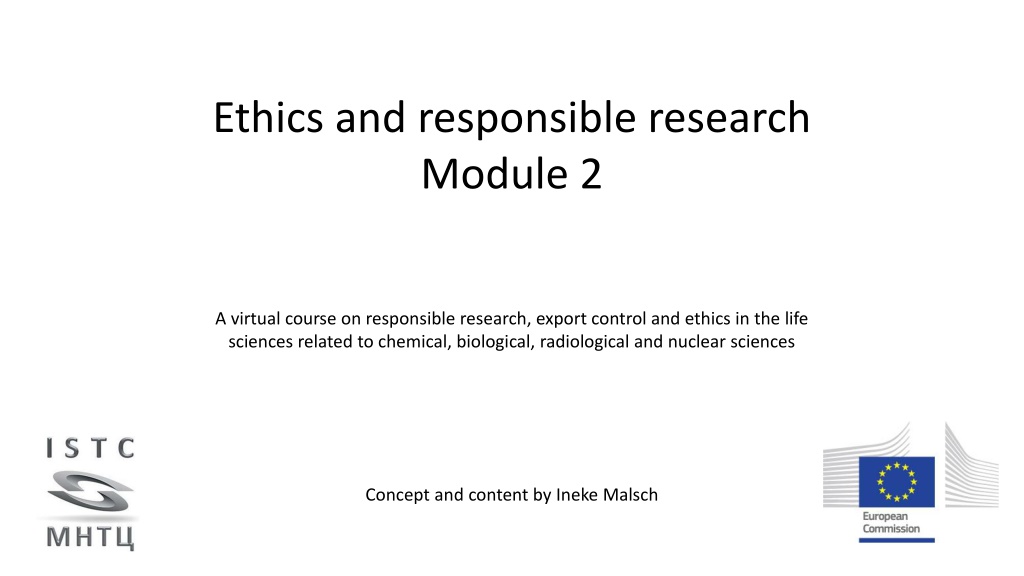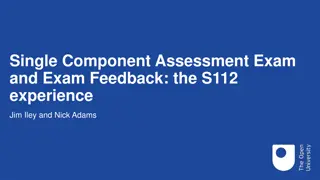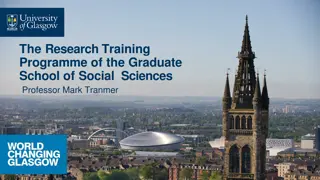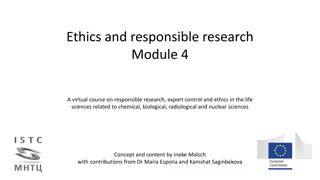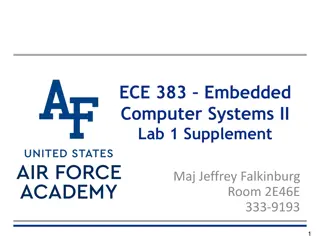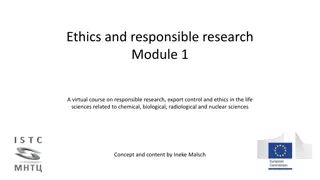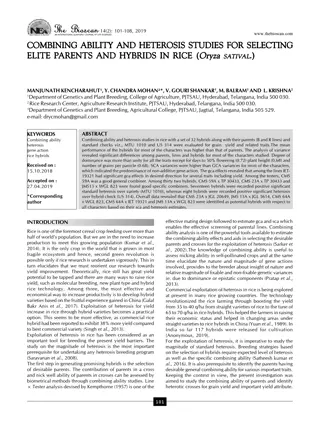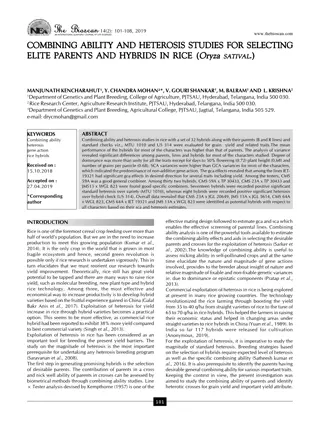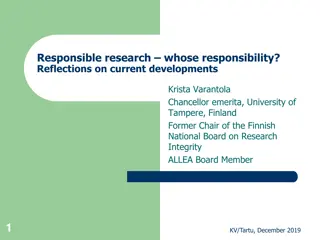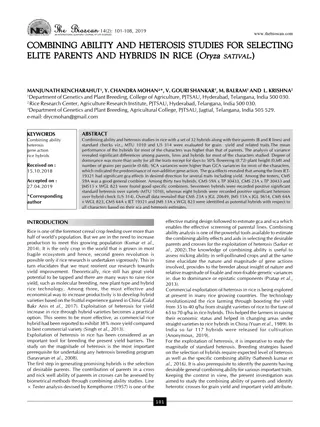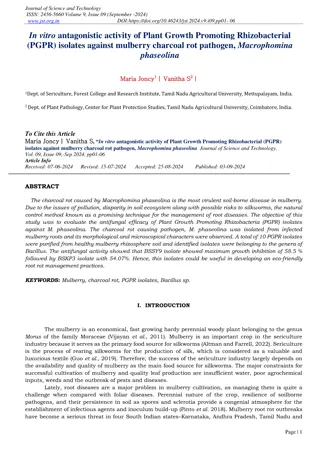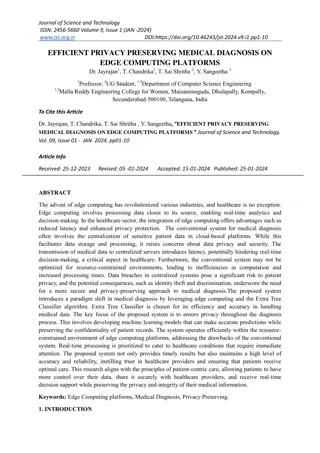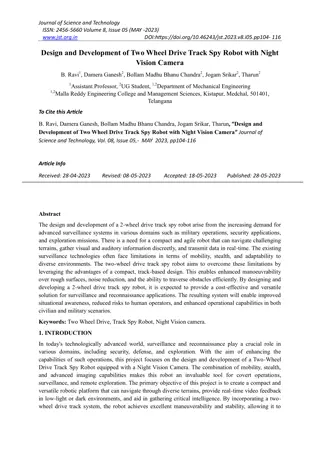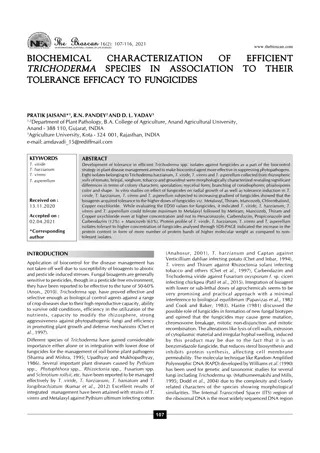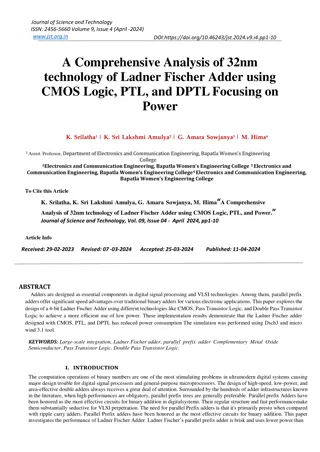Responsible Research in Life Sciences Module 2
This virtual course focuses on ethics, responsible research, and export control in the life sciences, addressing the role of scientists, regulatory challenges, and stakeholder responsibilities. Produced for ISTC as part of the EU-funded Targeted Initiative on CBRN Export Control.
Uploaded on Feb 26, 2025 | 0 Views
Download Presentation

Please find below an Image/Link to download the presentation.
The content on the website is provided AS IS for your information and personal use only. It may not be sold, licensed, or shared on other websites without obtaining consent from the author.If you encounter any issues during the download, it is possible that the publisher has removed the file from their server.
You are allowed to download the files provided on this website for personal or commercial use, subject to the condition that they are used lawfully. All files are the property of their respective owners.
The content on the website is provided AS IS for your information and personal use only. It may not be sold, licensed, or shared on other websites without obtaining consent from the author.
E N D
Presentation Transcript
Ethics and responsible research Module 2 A virtual course on responsible research, export control and ethics in the life sciences related to chemical, biological, radiological and nuclear sciences Concept and content by Ineke Malsch
Acknowledgements This virtual course on responsible research, export control and ethics in the life sciences related to chemical, biological, radiological and nuclear sciences has been produced and prepared for the International Science and Technology Center (ISTC) as part of the EU funded Targeted Initiative on CBRN Export Control on Dual-Use Materials and Intangible Technologies. The support of the European Commission for this course does not constitute endorsement of the contents which reflects the views only of the authors. The content of the course was created by Ineke Malsch. The project team of the Targeted Initiative on CBRN Export Control on Dual-Use Materials and Intangible Technologies provided comments and editing of the material.
Module 2 The role of scientists Introduction Addressing the special role of scientists Governing dual use life sciences calls for collective responsibility, engaging governments, scientists, industry, and civil society. Unlike existing products and activities in society, science and technology tend to challenge existing laws regulating environmental, health and safety and other ethical and societal aspects Regulatory procedures addressing the new issues often struggle to keep up with the pace of innovation To help fill this gap between innovation and regulation, voluntary measures are frequently adopted to avoid or preempt restrictive legislative measures governments impose soft regulations complementary to formal law professional societies adopt policies and codes of conduct groups of scientists develop codes in bottom-up initiatives
Module 2 The role of scientists Introduction Addressing the special role of scientists In addition to the general gap between innovation and regulation, dual use technologies, materials, and knowledge have misuse potential In addition to formal knowledge, e.g. in publications, tacit knowledge and know- how could be misused (the different forms of knowledge are addressed in module 4) Technological, social and regulatory measures can be used to prevent misuse (as listed in the concept web of prevention in module 1) Scientific institutions have a key role in implementation of measures In this module, the special roles of scientific institutions and individual scientists for both addressing the innovation-regulation gap and the misuse potential are explained
Module 2 The role of scientists Distributed responsibilities for responsible research Stakeholder community Role responsibilities of each community Policy makers: Regulate, orchestrate governance, engage in public dialogue Authorities (e.g. labour inspectorate, customs): Enforce regulations, align funding with standards Large industry and Small and Medium Enterprises: Corporate Social Responsibility, engage in public dialogue, lobbying Researcher institutions and individual researchers: Raise awareness of legal responsibilities under national and international law, voluntary self- regulations and standards, engagement with policy community, engage in public dialogue, and implement regulations NB: There are other relevant and pertinent stakeholders, this list is not meant to comprehensively survey the very complex network of actors involved in the crafting, designing, implementation, adoption, adaptation, enforcement and verification, as well as reviewing and evaluating relevant measures and instruments.
Module 2 The role of scientists Review of professional codes of conduct example of life sciences This review illustrates that codes of conduct for research are developed by different stakeholders for different reasons Who formulated the code? Aims and scope Examples Governments Such codes are a form of soft law to fill the gap between existing hard law and unregulated frontier science and technology. UNESCO Recommendation on Science and Scientific Researchers (1974, 2017) Universal Declaration on Bioethics and Human Rights (UNESCO, 2005) Professional societies Setting standards for professional conduct of the members of the society. Codes can be aspirational (no sanctions), educational or regulatory (imposing sanctions) American Society for Microbiology code of ethics (2000) (and others in Global Ethics Observatory) Bottom-up initiatives Voluntary declarations by groups of (young) scientists to take responsibility for the impacts of research WEF Young scientists code of ethics (2017)
Module 2 The role of scientists Avenues to address responsibility by research design Safer-by-design reduces risks and misuse potential design choices of new materials and technologies, reducing hazards and improving benefits to society trends and buzzwords in this area include: safer by design, quality by design, privacy enhancing techniques, etc. value sensitive design principles effectively involve philosophers and social scientists to contribute at early stages of R&D to identify potential issues Engaging in public dialogue other expertise than just scientific knowledge are needed to understand the ethical and societal issues raised as well as societal impacts. Diverse and plural views are an important way to identify and comprehensively address issues Mutual learning exercises engaging scientists and other stakeholders including dialogue and citizen science projects are sometimes appropriate ways to find feasible responses to the challenges
Module 2 The role of scientists Venues and avenues to address responsibility in research Where and when can scientists reflect on ethical principles? Where? When? In the university / school curriculum During formal education in compulsory or elective ethics or RRI courses, professional education courses At work During formal or informal meetings, in discussions with colleagues or management During scientific events Roundtables or sessions in conferences, dedicated workshops or seminars (online or on site), summer schools In publications Peer reviewed journals, academic books (both life sciences and social sciences and humanities), books and articles for professionals or general public In outreach activities Open days, public lectures, collaboration with schools and science museums Can you think of other ways?
Module 2 The role of scientists Why should scientists reflect on ethical principles? The critical question is why should any of this be done? Mainly to avoid problems later. However, a problem presents itself, the Collingridge dilemma: Collingridge dilemma Reason Explanation Life scientists know the technical properties of emerging technologies better and earlier than other people. This implies a responsibility to consider emerging risks and benefits and inform policy makers and the public. In the early stages of innovation, the technology is flexible, but potential future impacts are unclear In late stages of innovation, the impacts are known, but the technology is entrenched and inflexible Early warning (Collingridge dilemma) The life science profession is not open to just anybody. Several learned societies have formulated ethical codes of conduct and ask their members to sign up to them. Professional pride Can you think of other reasons?
Module 2 The role of scientists What are limitations of reflection on ethical principles? Limitations Unforeseen effects Several different methodologies can be used to help with uncertainty where simple risk assessments are not feasible or applicable, e.g. multi criteria mapping, delphi studies, and the precautionary principle. Natural scientists are not ethicists Transdisciplinary collaboration and plural view points are needed to address difficult issues Many hands problem Other stakeholders also need to contribute to addressing identified issues
Module 2 The role of scientists Why should scientists engage in dialogue with society? Reason What does it mean? Accountability to general public Public research is often paid from taxes. The public accordingly has a right to know. Wisdom of the crowd Nobody knows everything, but most people know something. Bringing together insights from a wide variety of people from different backgrounds in R&D is likely to lead to more robust technologies. Science is a Human Right The Universal Declaration of Human Rights (1948) gives everyone the right to: share in scientific advancement and its benefits. Risk to society Historically, science and technology have brought many benefits to society, but also introduced disastrous risks. To overcome organised irresponsibility in society, governments, scientists, industry, civil society organisations and citizens should collaborate in reducing the risks and promoting the benefits.
Module 2 The role of scientists A collective responsibility for preventing misuse How can scientists contribute to collective responsibility for preventing misuse of dual use technologies? To close the gap between innovation and regulation, develop voluntary self-regulation Think about ethical dilemmas in research practices and adapt design of technologies to reduce risks and misuse potential Engage with citizens and enter in public dialogue for mutual learning Collective responsibility also has the side effect of fragmenting responsibility so that no real accountability exists as it fall in the gaps between everyone involved in the processes.
Module 2 The role of scientists A collective responsibility for preventing misuse Responsibilities of the Institutional Management? A crude model Invest in risk management infrastructure and technologies Appoint risk officers and integrity advisors Organise training in laboratory safety, security, and legal requirements Protect whistle blowers reporting hazardous or suspicious activities Regular table discussions on safety and security appropriate to the scientific discipline Use tools to assess risk management approach
Module 2 The role of scientists Conclusions Scientists are citizens and as such share in the responsible conduct of science and for ethical impacts of research on society Scientists have special knowledge and skills, and hence have specific role and responsibilities These responsibilities include: Being aware of national and international rules, develop voluntary regulations and standards, science for policy, benign- by-design, and engage in public dialogue Because progress in science is often ahead of formal laws, complementary voluntary self-regulation may be needed Governments and public and private bodies offer methodologies and tools for performing responsible research and innovation
Module 2 The role of scientists Self-assessment quiz: 1. What is responsible research? a. Living up to standards of good professional conduct and citizenship b. Letting school children work in the research laboratory c. Sharing all information on research on the internet 2. If I discover potential negative effects of my research, I should: a. Immediately inform the media b. Engage in dialogue with other scientists and stakeholders c. Stop working on it 3. What is the best approach to responsible governance of research? a. Continuously adapt legislation to accommodate emerging technologies b. Aim to create safe and sustainable technologies by design c. Engaging in wide public and stakeholder dialogue on responsible research and innovation d. A balanced combination of a, b and c
Module 2 The role of scientists Answers to Self-assessment quiz: 1 a: the term responsible implies that you will need to think about the appropriate decision in a particular case, rather than merely following rules which may not be relevant in that case. 2 b: responsible research is not risk free, but it means that stakeholders are engaged in decisions on the best strategy balancing potential risks and benefits. 3 d: responsible research is a collective endeavour, where several measures are taken in parallel, always considering what is most appropriate in a particular case.
